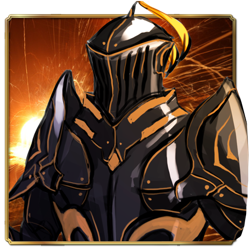
When the book attacks....
I recently attained a book about 3ds turtorials. I read it from cover to cover, did all the tut''s and now im hella confused. It didnt explain to me how i go about modeling advanced shapes like characters and so on and so forth.
So now, im looking to the online community. I can model pretty good in milkshape but I am seeking some examples of medium poly people models. i can model high poy just fine but that ever elussive low and medium.. god damn.
Can anyone help me, im dieing *wimper*
Why does my life have to be so hard in every world?


What was the book you read called?
-----------------------------------------------
All messages are of my own personal opinion and
not meant to offend. But if they do - tough :)
Neuro.
-----------------------------------------------
All messages are of my own personal opinion and
not meant to offend. But if they do - tough :)
Neuro.
-----------------------------------------------All messages are of my own personal opinion and not meant to offend. But if they do - tough :)Neuro.
3d studio max tutorials. it is entirely possible that I have completely missed the point of the tutors. im a sketch artist so 3d is kind of a step.
Why does my life have to be so hard in every world?

Why does my life have to be so hard in every world?

I''m not sure how you go about modeling high poly objects, but I do it by steps just like drawing. Start with a basic shape then build onto it, mold it and give it definition. I''ve never been able to just create a high poly model from scratch (or a drawing or sculpture for that matter) without having previous, lower poly models of it.
There are several books about character modeling and animation. Go check out amazon.com and search for 3D. You won''t find anything on Milkshape, but 3D concepts are cross platform/package. Once you''ve got the basics down, it''s easy to translate those to any software package.
My suggestion, though, is to create your model by starting with a polygonal cube and extruding surfaces. That''s probably the best and easiest way to create a low poly count model.
-------
Monkey eat deadCricket, checkmate!
There are several books about character modeling and animation. Go check out amazon.com and search for 3D. You won''t find anything on Milkshape, but 3D concepts are cross platform/package. Once you''ve got the basics down, it''s easy to translate those to any software package.
My suggestion, though, is to create your model by starting with a polygonal cube and extruding surfaces. That''s probably the best and easiest way to create a low poly count model.
-------
Monkey eat deadCricket, checkmate!
-------Monkey eat deadCricket, checkmate!
I think the first place you wnat to go to is 3Dcafe
The main technique used to model characters, as far as I know, seems to be face extrusion + tesselation .
Basically, you start from a basic shape (a cube), and progressively add details by extending the shape. From a cube, create to legs, two arms and a head (all cubic). Then progressively add vertices where you need them, increasing the details, until you are happy. That would be the technique for quakelike models.
Another technique I saw for a face was simply to create the face from sideview lines, a bit like doing a head scanner, and then building from the different pictures of the scanner a 3D head. It''s a bit confusing, but it actually works if you have a good understanding of space. It helps *a lot* to have done some sculpture/modelling first. If you are only a sketch artist, try, as an exercise, to draw something from different angles, it forces you to *think* 3D, which is very very different from drawing only in 2D. Space and perspective are not something you learn naturally, it helps digging up some dusty books in a library about art, and drawing techniques.
youpla :-P
The main technique used to model characters, as far as I know, seems to be face extrusion + tesselation .
Basically, you start from a basic shape (a cube), and progressively add details by extending the shape. From a cube, create to legs, two arms and a head (all cubic). Then progressively add vertices where you need them, increasing the details, until you are happy. That would be the technique for quakelike models.
Another technique I saw for a face was simply to create the face from sideview lines, a bit like doing a head scanner, and then building from the different pictures of the scanner a 3D head. It''s a bit confusing, but it actually works if you have a good understanding of space. It helps *a lot* to have done some sculpture/modelling first. If you are only a sketch artist, try, as an exercise, to draw something from different angles, it forces you to *think* 3D, which is very very different from drawing only in 2D. Space and perspective are not something you learn naturally, it helps digging up some dusty books in a library about art, and drawing techniques.
youpla :-P
-----------------------------Sancte Isidore ora pro nobis !
yes, i would also recommend 3dcafe''s tutorial section 
some other places for tuts are:
http://max3d.3dluvr.com/
max3d, great resource of plugins, links and tutorials
----
http://www.raph.com/3dartists/
3d Artists Gallery, huge gallery of art, some tutorials, several interviews
----
http://www.nichimen.com/
nichimen''s site, maker of nendo and other programs, i would recommend downloading nendo for use in make low/medium/high poly objects/characters
----
-mike
some other places for tuts are:
http://max3d.3dluvr.com/
max3d, great resource of plugins, links and tutorials
----
http://www.raph.com/3dartists/
3d Artists Gallery, huge gallery of art, some tutorials, several interviews
----
http://www.nichimen.com/
nichimen''s site, maker of nendo and other programs, i would recommend downloading nendo for use in make low/medium/high poly objects/characters
----
-mike
Thanks guys. ill try that out.. ughh i dislike max... You know what, ive actully been modeling in milkshape all this time an going into max to edit beziers but that doesnt always work the way i planned but it make things look all mooth and shiny.
"Why does my life have to be so hard in every world?"
Nanami Jinii

"Why does my life have to be so hard in every world?"
Nanami Jinii

One of my favourite ways of modeling highpoly (organic)objects in 3ds max is using surface tools. it''s a plugin for r2 and is included by default in r3.
they way you do it is you create a mesh cage with splines, fusing the points of the splines together, making sure that the points are arranged so that they form 3 and 4 point ''faces'',
the spline cage does not have to bee very complex, because of th besier splines. in fact, the more you can achieve with less points the better, then you apply the surface modifier and it makes the surface over the spline cage.
ok this was a very simple explanation, i think that 3dluvr (link somewhere above) has a tutorial on this. Also check out
3dcafe :they have a huge collection of tutorials.
hope my little explanation helped.

yeah, that, and getting toasted...niicely toasted.
they way you do it is you create a mesh cage with splines, fusing the points of the splines together, making sure that the points are arranged so that they form 3 and 4 point ''faces'',
the spline cage does not have to bee very complex, because of th besier splines. in fact, the more you can achieve with less points the better, then you apply the surface modifier and it makes the surface over the spline cage.
ok this was a very simple explanation, i think that 3dluvr (link somewhere above) has a tutorial on this. Also check out
3dcafe :they have a huge collection of tutorials.
hope my little explanation helped.
yeah, that, and getting toasted...niicely toasted.
yeah, that, and getting toasted...niicely toasted.
"Why does my life have to be so hard in every world?"
Nanami Jinii

for games: face extrusion is probably the best. cuz, for game creation, you have to build up the number of polys, rather than make it complex and cut it down. i''ve been using meshsmooth a lot, too, but i dunno if this is necessarily a "technique"
however, for not games: try using NURBS. you can get some seriously smooth, cartoony looks, and the control vertices are easier to animate than for patches and stuff. but, i assume you''re talking about just game models.
but either way, spend lots of time preplanning the creation of your objects. figure out ways in which you can combine them from primitives, (but for game models, try not to use the boolean compound object. it creates too many faces (unless others would like to disagree..)) for game models, i do use extrude, and then just modify the vertices independently until the object takes shape, like everyone else says.
good luck. have fun.
a2k
however, for not games: try using NURBS. you can get some seriously smooth, cartoony looks, and the control vertices are easier to animate than for patches and stuff. but, i assume you''re talking about just game models.
but either way, spend lots of time preplanning the creation of your objects. figure out ways in which you can combine them from primitives, (but for game models, try not to use the boolean compound object. it creates too many faces (unless others would like to disagree..)) for game models, i do use extrude, and then just modify the vertices independently until the object takes shape, like everyone else says.
good luck. have fun.
a2k
------------------General Equation, this is Private Function reporting for duty, sir!a2k
This topic is closed to new replies.
Advertisement
Popular Topics
Advertisement
Recommended Tutorials
Advertisement








